|
|
|
Sort Order |
|
|
|
Items / Page
|
|
|
|
|
|
|
| Srl | Item |
| 1 |
ID:
169499
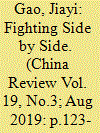

|
|
|
|
|
| Summary/Abstract |
After World War II, the Chinese Civil War and the Indochina War broke out one after another. The Chinese Communist Party (CCP) and the League for the Independence of Vietnam (Viet Minh) launched cross-border military cooperation, challenging the legitimacy of the Kuomintang (KMT) in China and the French colonial regime in Indochina, and bringing together the socialist revolutionary cause of China and the anti-colonial movement of the people of Southeast Asia. At that time, the cooperation was mainly divided into three categories: First, when the guerrillas of the CCP in the southern border of China were forced to transfer to Vietnamese territory for concealment and training, the Viet Minh provided accommodation as well as financial and material support. Second, while they were in Vietnam, the CCP members assisted the Viet Minh in carrying out daily logistics, intelligence, and publicity work to help the Vietnamese army in training and in organizing the self-defence forces of the overseas Chinese. Third, starting from 1948, the CCP and the Viet Minh army carried out joint military operations on their border. Overall, the exchanges and cooperation between China and Vietnam from 1945 and 1947 were spontaneous, small-scale, scattered, and secretive. However, with the transformation of the Civil War in China in 1948, the exchanges and cooperation between the two sides took a strategic and long-term perspective. The Vietnamese first sent troops to help the Chinese side liberate the border areas, and then waited for the Chinese People’s Liberation Army (PLA) to move to the south to help the Vietnamese resistance, laying the groundwork for an anti-France campaign after the founding of the People’s Republic of China (PRC). At that time, the two parties of China and Vietnam were equal and mutually supportive, and the CCP’s leadership over the Viet Minh after its successful revolution was not yet formed. In short, the mutual assistance during the revolution between China and Vietnam advanced the process of the revolutionary war in the two countries, reconstructed the relations between the two parties and two countries, and had a far-reaching impact on the revolutionary situation in Southeast Asia and the development of the Asian socialist camp.
|
|
|
|
|
|
|
|
|
|
|
|
|
|
|
|
| 2 |
ID:
169495


|
|
|
|
|
| Summary/Abstract |
The period from the 1950s to the 1960s witnessed a significant change in the relationship between China and the Soviet Union, which evolved from that of a friendly partnership to one of antagonistic rivalry. This change also plunged Chinese students in different Soviet universities and research institutes into a more complex situation. As Sino–Soviet relations soured over time, these young students had to follow instructions from their homeland and adjust their roles and standpoints accordingly. While they were supposed to stand for the friendship between the two countries and as representatives of the driving force dedicated to socialist construction, they were, however, torn between their own studies and the political priorities of the state. In most cases, they had no choice but to give up hitherto relatively unconstrained lives and fight against revisionism, like frontline soldiers, based on their belief in the Chinese Communist Party (CCP) and their motherland. This in turn immediately put them under direct pressure and made them targets of tit-for-tat policies from Soviet authorities. As they were committed to prioritizing their political work rather than their own studies, they became integrated into the Chinese state as major players and witnessed the worsening trend in Sino–Soviet relations that eventually resulted in a complete breakdown.
|
|
|
|
|
|
|
|
|
|
|
|
|
|
|
|
| 3 |
ID:
169498
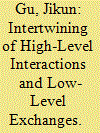

|
|
|
|
|
| Summary/Abstract |
From 1950 to 1964, in response to a request from the Mongolian government, the Chinese government sent more than 20,000 workers to Mongolia in order to assist in its socialist construction. Making use of Chinese, Mongolian, and Soviet official documents, this article reconstructs the origins and process of sending Chinese workers to Mongolia. It shows that when the Chinese Communist Party and the Mongolian People’s Revolutionary Party were friendly with each other, China and Mongolia could tolerate disagreements and their respective failures to honor their agreements on the treatment of Chinese workers in Mongolia. However, when relations between the two partners soured, these workers became the scapegoats by which each side criticized and defamed the other. From the Chinese workers’ perspective, although they were passively involved in the personnel exchanges between China and Mongolia, they did become the crux of Sino–Mongolian relations under special circumstances. At the same time, affected by the fluctuations in those relations, some of them were imprisoned and some even paid the ultimate price with their lives. The fates of “ordinary people” who were involved in interactions between socialist countries in the context of the Cold War deserves attention and further study.
|
|
|
|
|
|
|
|
|
|
|
|
|
|
|
|
| 4 |
ID:
169494
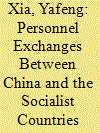

|
|
|
|
|
| Summary/Abstract |
Since the early 1990s, transnational history has become a globally important methodological approach. Transnational historians question the study of history based on national borders and reject the national framework as a means for understanding the past. As U.S. historian Thomas Borstelmann notes, “They focused on migrations, trade, communications, cultural exchanges, political and religious identities”, human rights issues, international sports, and other forms of movement across and beyond national borders.1 In the past 30 years, transnational history has greatly influenced the writing of U.S. foreign relations history and Cold War history.
|
|
|
|
|
|
|
|
|
|
|
|
|
|
|
|
| 5 |
ID:
169497
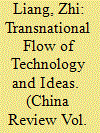

|
|
|
|
|
| Summary/Abstract |
Foreign intern training is a typical case study for investigating personnel exchanges among socialist bloc countries during the Cold War. Receiving and training North Korean interns was the beginning of China’s foreign intern training program. Additionally, China’s training of foreign interns in the Cold War is an ideal case study for Chinese scholars who adopt transnational history approaches. In accordance with transnational history research approaches, studying the North Korean interns from the perspective of “bottom-up politics” contributes to the reconstruction of the history of Sino–North Korean relations. On the basis of primary documentation from Shanghai Municipal Archive as well as documents from the Chinese Foreign Ministry Archive and Hebei Provincial Archive, this article narrates the history of North Korea’s selecting of interns and China’s training of them in Shanghai from 1953 to 1967. The article reconstructs the daily interaction of the North Korean interns with their Chinese hosts. It highlights some of the common features in the evolution of the relations between the Chinese Communist Party (CCP) and the Korean Workers’ Party (KWP), and between the People’s Republic of China and the Democratic People’s Republic of Korea. From a longer and broader historical perspective, the article concludes that intern training programs usually became the victim of deteriorating bilateral relations. Thus, technical training served as an accurate barometer of the CCP–KWP relationship. It failed to be the driving force for promoting Sino–North Korean state-to-state relations.
|
|
|
|
|
|
|
|
|
|
|
|
|
|
|
|
| 6 |
ID:
169496
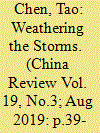

|
|
|
|
|
| Summary/Abstract |
The Zhengzhou Grinding Wheel Factory was a major project undertaken by German Democratic Republic (GDR, or East Germany) in the early years of the People’s Republic of China. It was a symbol of Sino– GDR cooperation and friendship between the two fraternal countries. To help build the factory, East German engineers came to Zhengzhou in 1954 and stayed until 1964, when the 10-year-long project was finally completed. They were the last group of foreign specialists remaining in China before the Cultural Revolution, and also comprised the few Europeans who experienced the Great Leap Forward, the Great Famine, and the ideological disputes between China and the Soviet bloc countries, which greatly damaged the project and were the primary reasons for the delay of its completion. The East German specialists weathered these storms and became tools of the Sozialistische Einheitspartei Deutschlands to maintain state relations with China. Their daily lives were deeply influenced by the development of and changes in Sino–GDR relations. Consequently, their attitudes towards the Sino–Soviet split are very complicated.
|
|
|
|
|
|
|
|
|
|
|
|
|
|
|
|
|
|
|
|
|